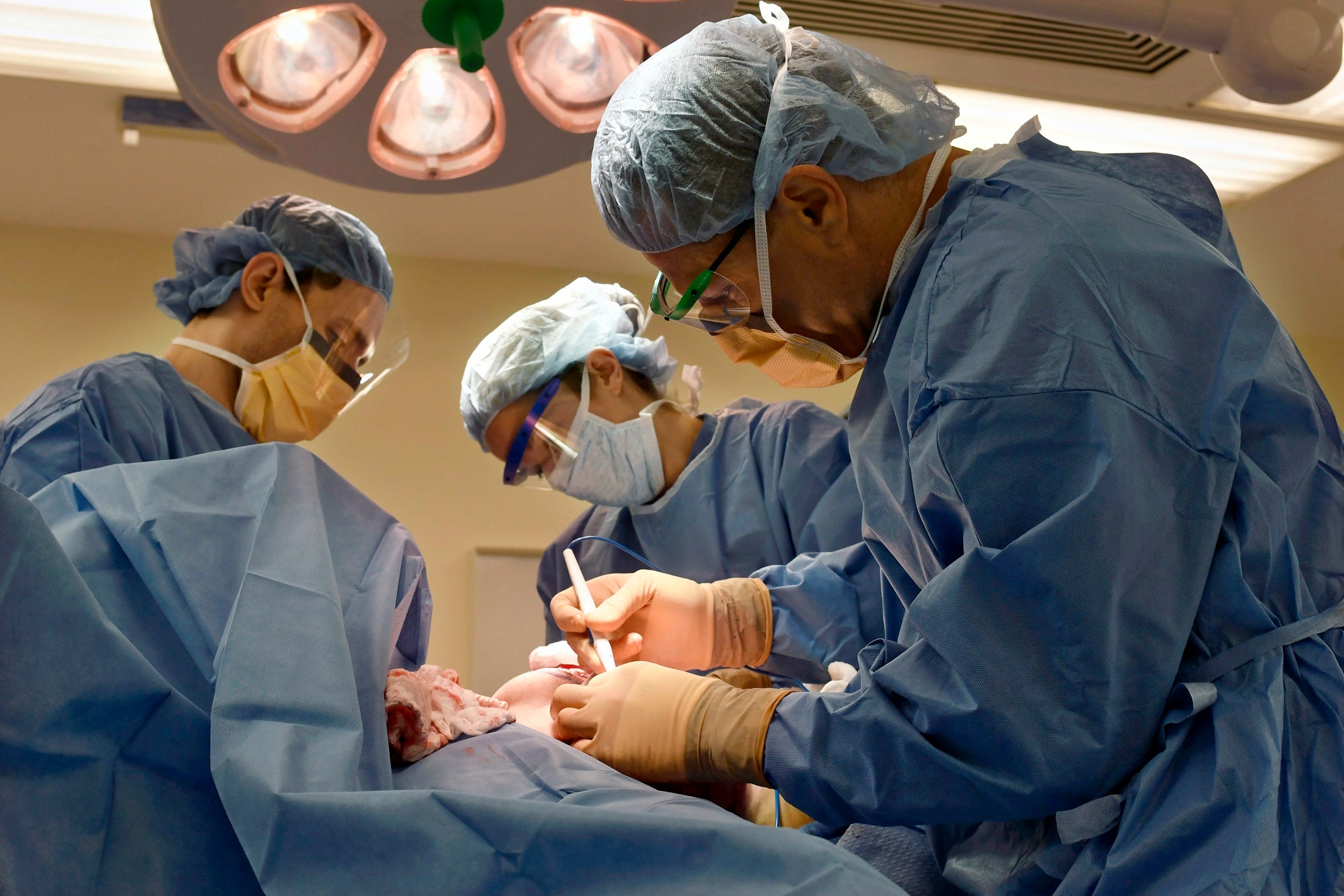Gender-affirming surgeries in the US nearly tripled before Covid pandemic dip, study finds
During the five-year study, there were about 48,000 patients who underwent such surgeries

The number of gender-affirming surgeries in the United States nearly tripled from 2016 to 2019 before dipping slightly in 2020, according to a new study.
The dip in 2020 can be attributed to the Covid pandemic, the study published Wednesday found.
The growing numbers before the pandemic likely reflect the expanded insurance coverage for transgender care after the Obama administration and some states actively discouraged discrimination based on gender identity, lead author Dr Jason Wright of Columbia University said.
During the five-year study, there were about 48,000 patients who underwent such gender-affirming surgeries, with about 13,000 procedures done in 2019 and 12,800 in 2020.
Researchers looked at records from two national surgery databases for all age groups and found that breast surgeries were the most common type, followed by genital surgeries.
The researchers also counted about 6,600 cosmetic procedures such as liposuction, face lifts and nose reshaping.
More than half the patients were aged 19 to 30 and surgeries in patients 18 years and younger were quite rare, with fewer than 1,200 in the highest volume year.
Over the past couple of years, many states in the country have taken steps to restrict or ban transgender care for people under the age of 18, which in turn has added to waiting lists of patients seeking care that have declared themselves refuges for transgender people.
“This age group is really not what’s driving the overall increase in gender-affirming surgery that we found,” Dr Wright said.
The most common surgeries among younger patients were breast and chest procedures, with more than 3,000 young people undergoing such operations during the five-year period.
Dr Loren Schechter of Rush University Medical Center in Chicago, who specialises in gender-affirming surgery said these procedures at such an age will allow people to “go to the next phase of their life in a body with which they’re comfortable and is synchronous with their identity.”
The study, published in JAMA Network Open, did not look at more common treatments in minors such as puberty blockers and hormones.
What is gender-affirming or sex reassignment surgery?
This surgery refers to procedures that help people transition to their self-identified gender, according to the Cleveland Clinic.
People often get these surgeries done so that their physical body matches their gender identity.
“People who choose gender affirmation surgery do so because they experience gender dysphoria. Gender dysphoria is the distress that occurs when your sex assigned at birth does not match your gender identity,” the clinic has said on its website.
These are some transgender surgery options some people may choose to do:
Facial reconstructive surgery to make facial features more masculine or feminine.
Chest or “Top” surgery to remove breast tissue for a more masculine appearance or enhance breast size and shape.
Genital or “Bottom” surgery to transform and reconstruct the genitalia.
However, surgery is just one option and not everyone who is transgender, or nonbinary chooses to have surgery.
Other options people might choose include hormone therapy, puberty blockers and voice therapy.
Associated Press contributed to this report
Join our commenting forum
Join thought-provoking conversations, follow other Independent readers and see their replies
Comments


Bookmark popover
Removed from bookmarks